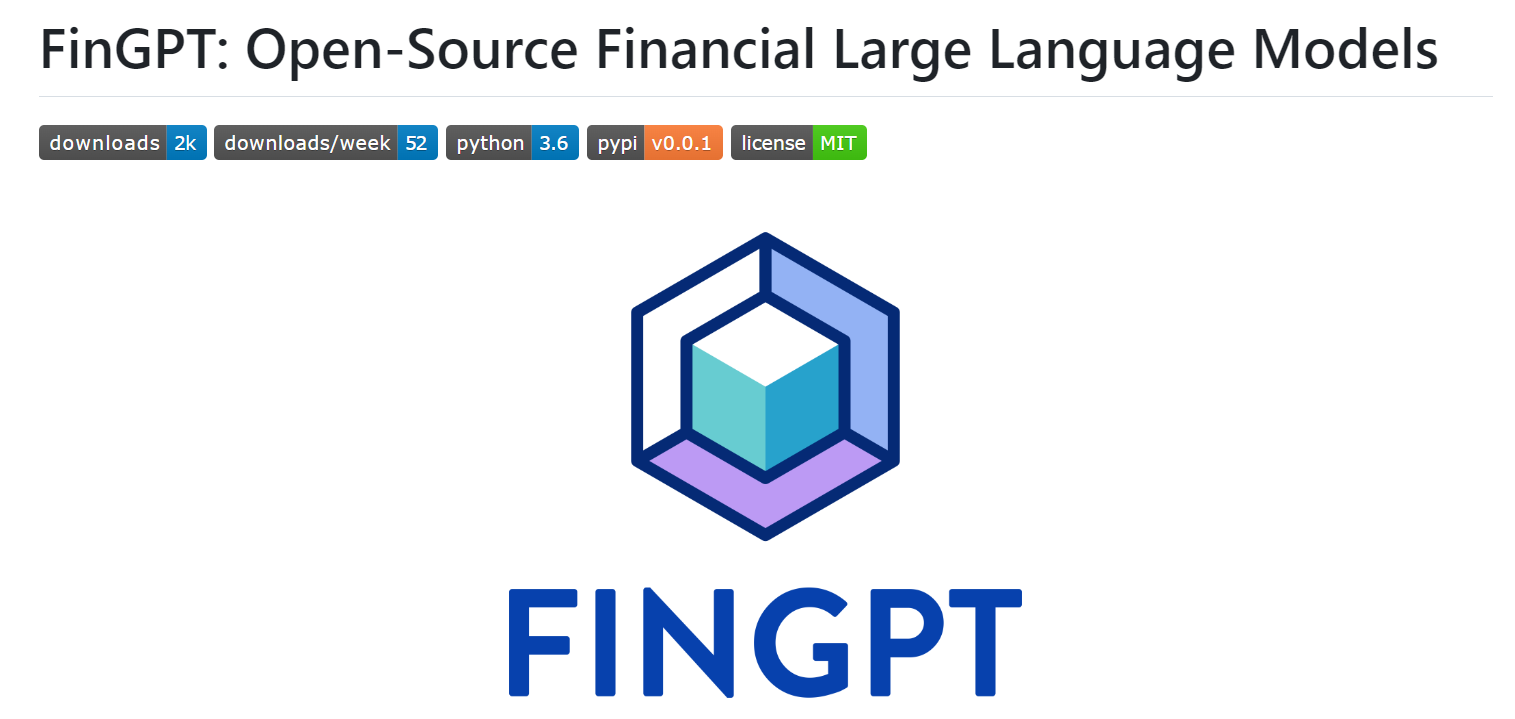
Let us not expect Wall Street to open-source LLMs or open APIs, due to FinTech institutes' internal regulations and policies.
Blueprint of FinGPT
https://huggingface.co/FinGPT

What's New:
Why FinGPT?
1). Finance is highly dynamic. BloombergGPT trained an LLM using a mixture of finance data and general-purpose data, which took about 53 days, at a cost of around $3M). It is costly to retrain an LLM model like BloombergGPT every month or every week, thus lightweight adaptation is highly favorable. FinGPT can be fine-tuned swiftly to incorporate new data (the cost falls significantly, less than $300 per fine-tuning).
2). Democratizing Internet-scale financial data is critical, say allowing timely updates of the model (monthly or weekly updates) using an automatic data curation pipeline. BloombergGPT has privileged data access and APIs, while FinGPT presents a more accessible alternative. It prioritizes lightweight adaptation, leveraging the best available open-source LLMs.
3). The key technology is "RLHF (Reinforcement learning from human feedback)", which is missing in BloombergGPT. RLHF enables an LLM model to learn individual preferences (risk-aversion level, investing habits, personalized robo-advisor, etc.), which is the "secret" ingredient of ChatGPT and GPT4.
Milestone of AI Robo-Advisor: FinGPT-Forecaster
Try the latest released FinGPT-Forecaster demo at our HuggingFace Space